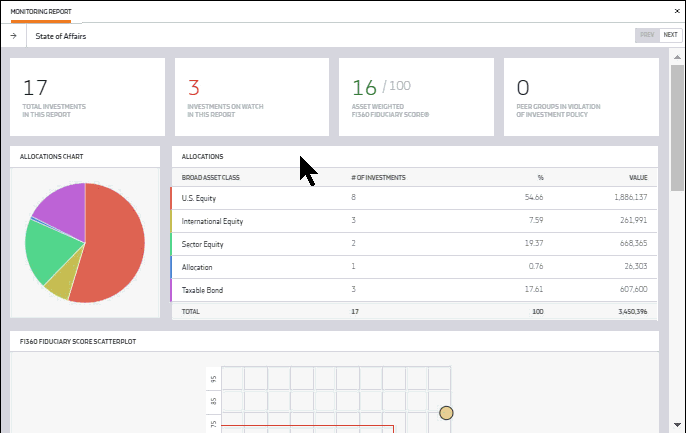

care for every investor, made simple.
Fi360 empowers financial intermediaries to use the Prudent Practices® to profitably gather, grow and protect investors’ assets with a fiduciary standard of care. Our training, technology and analytics make implementing a prudent process for all clients easier at every step.
Learn MoreAre you
Fi360 is now a part of Broadridge Retirement and Workplace.
Learn More
From fiduciary basics to thorough mastery, our learning and development programs are designed to empower financial professionals with the knowledge they need to effectively serve all clients and grow their business.
Learn more
Our software and technology solutions enable investment professionals to strengthen client relationships and win more business with a repeatable, prudent process that is easily managed and documented.
Learn more
We give our clients a look under the hood with our fiduciary-focused data and analytics solutions, including custom reports and analysis that can be used in marketing materials and presentations to demonstrate a prudent process.
Learn more

Fiduciary Focus Toolkit™ Powerful and easy.
We think that’s a winning combination for any business. And our Toolkit users agree. The Fi360 Toolkit™ is a web-based software solution that provides the analytical, management and reporting features investment professionals need to administer and document a prudent investment process.
Learn more




AIF® DesignationGo ahead, be a showoff.
Financial professionals who earn our Accredited Investment Fiduciary® (AIF®) Designation are part of an elite professional community of fiduciary specialists who have earned credibility and distinction in the marketplace. The mark is a symbol to investors that the holder has committed to putting their best interests first.
Learn more
